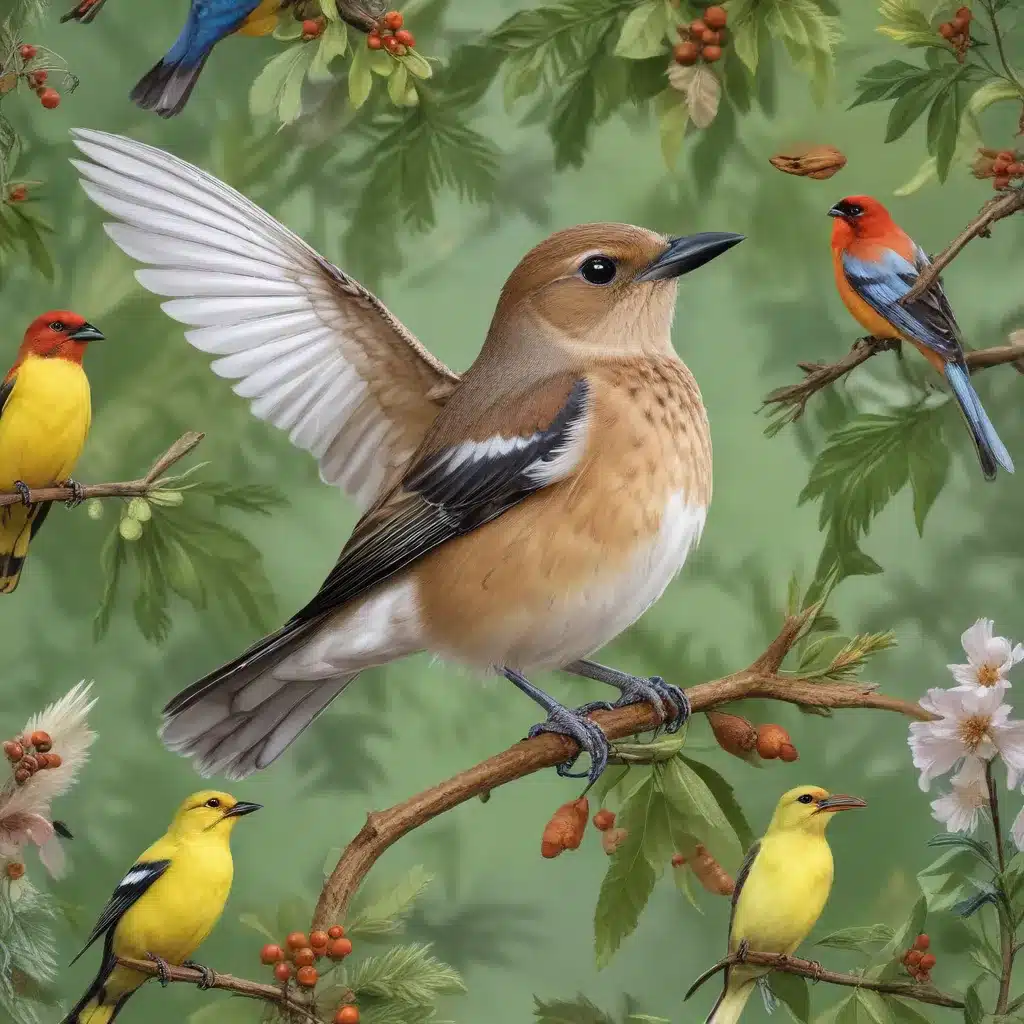
Birds are truly winged wonders – from the towering albatross to the diminutive hummingbird, the sheer diversity of avian life is astounding. As an experienced avian caretaker, I’ve had the privilege of working with a wide range of species, each with their own unique requirements and behaviors. In this comprehensive article, we’ll delve into the complex world of bird care, covering everything from habitat setup and nutrition to behavior interpretation and exotic species management.
Avian Diversity
Bird Taxonomy
The avian kingdom is incredibly varied, with over 10,000 known species spread across 23 orders and 195 families. From the iconic raptors and waterfowl to the vibrant songbirds and tropical parrots, each group has evolved to thrive in its own niche. Understanding the taxonomic classifications is crucial when it comes to providing the right care and environment for our feathered friends.
Habitat Preferences
Birds have adapted to flourish in a wide range of habitats, from dense rainforests to vast open plains. Careful consideration of a species’ natural environment is essential when setting up an enclosure or aviary. For example, hummingbirds require specialized feeders and lush, flowering plants, while birds of prey need ample space to spread their wings and perch at varying heights. Paying attention to these nuanced habitat needs is key to ensuring the health and well-being of our avian companions.
Feeding Behaviors
The diverse feeding strategies of birds are truly fascinating. Some species are adept at hunting live prey, while others excel at foraging for seeds, fruits, or nectar. Understanding a bird’s natural diet and foraging habits is crucial for providing the right nutritional balance. For instance, raptors require a diet rich in protein, while nectarivores need a carefully formulated nectar mix. Catering to these specialized feeding behaviors is a fundamental aspect of responsible avian care.
Winged Anatomy
Feather Structure
The intricate structure of feathers is a marvel of natural engineering. From the downy undercoat to the sleek outer vanes, each component plays a vital role in a bird’s ability to fly, insulate, and communicate. Properly maintaining feather health through regular grooming and providing the right environmental conditions is essential for the overall well-being of our avian charges.
Wing Adaptations
The wings of birds have evolved to suit a wide range of flight styles, from the powerful soaring of eagles to the agile hovering of hummingbirds. Understanding these anatomical adaptations is crucial when it comes to housing and enriching our feathered companions. Providing ample space for flight and perching at different heights can help promote natural wing movement and exercise.
Respiratory Systems
The respiratory systems of birds are remarkably efficient, with specialized air sacs that allow for continuous airflow and efficient oxygen exchange. Maintaining proper air quality and humidity levels in an aviary or enclosure is essential for supporting healthy respiratory function. Vigilance in monitoring environmental conditions and proactively addressing any issues is a must for responsible avian caregivers.
Avian Behavior
Migratory Patterns
Many bird species undertake remarkable migratory journeys, traversing vast distances to take advantage of seasonal food sources and breeding grounds. Catering to these innate behavioral patterns can be a challenge for captive birds, but providing appropriate environmental cues and enrichment can help mitigate stress and promote natural behaviors.
Courtship Rituals
The elaborate courtship displays of birds are truly awe-inspiring, from the mesmerizing dances of cranes to the elaborate bower constructions of bowerbirds. Understanding and accommodating these complex social and reproductive behaviors is crucial for successful breeding programs and maintaining the overall well-being of our avian charges.
Nesting Behaviors
The intricate nest-building skills of birds are a testament to their intelligence and adaptability. Providing suitable nesting materials and spaces can encourage natural nesting behaviors, which are essential for both breeding and the overall psychological health of our feathered companions.
Conservation Efforts
Endangered Species
Unfortunately, many bird species are facing threats to their survival, from habitat loss to illegal trade. As avian caretakers, we have a responsibility to support conservation efforts and promote awareness of these pressing issues. By partnering with reputable organizations and implementing best practices in our own facilities, we can play a vital role in safeguarding the future of these winged wonders.
Habitat Preservation
Protecting and restoring natural habitats is crucial for the long-term survival of bird populations. As avian experts, we can contribute to these efforts by advocating for conservation initiatives, supporting eco-friendly practices, and educating the public on the importance of preserving diverse ecosystems.
Rehabilitation Initiatives
In addition to conservation work, many avian care facilities also play a crucial role in the rehabilitation and release of injured or orphaned birds. Adhering to strict safety protocols and providing specialized medical care and enrichment can help these birds regain their strength and eventually return to the wild. By participating in these vital rehabilitation programs, we can make a tangible difference in the lives of individual birds and contribute to the overall health of wild populations.
Caring for the diverse array of bird species requires a deep understanding of their unique needs and behaviors. As an experienced avian caretaker, I’ve witnessed the incredible resilience and adaptability of these winged wonders, and I’m constantly in awe of their remarkable capabilities. By staying informed, implementing best practices, and supporting conservation efforts, we can ensure that these magnificent creatures continue to soar for generations to come. For more information and resources, be sure to visit Mika Birds Farm – a hub of avian expertise and passion.


